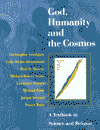Applying Critical Realism to TheologyA very influential array of
scientist-theologians This is a problematic claim. What are the ‘data’ of a religion which correspond to those of a science? Some might argue that they are the scriptures of that faith, others the liturgy, others religious experience. Again, can it be said that there is a genuine critical element which can lead to theories being discarded, or are religious data privileged against falsification? Willem B. Drees (see Drees’ Typology)
dismisses the claim of theology to be regarded as a realist discipline like the
sciences. In his view theology shows no parallel with the spectacular success
of science. With the science of the last three hundred years there is a
cumulative success, an ongoing fertility in the development of new theories,
which is simply absent from theology. Click on the ongoing debate on critical realism and theology to follow the argument in more detail. Or go to consonances between science and religion. We can understand more about the similarities and differences between claims to realism in science and in theology by looking at the role played by model and metaphor in these two rationalities. Click on the role of model and metaphor to explore this.
Email
link | Feedback | Contributed by: Dr. Christopher Southgate
|






